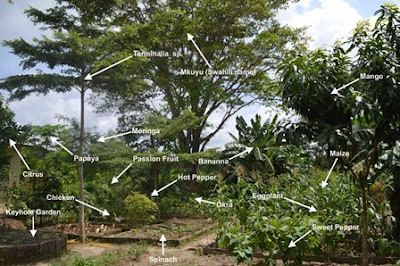PDC LESSON 2.56 DESIGN – HUGELKULTUR Part -2- THE GREATNESS
PERMACULTURE COURSE AGRO-ECONOMY
PDC LESSON 2.56 DESIGN – HUGELKULTUR Part -2- THE GREATNESS
1. Woody base
Hugelkultur raised beds are
dependent on a wooden foundation. This includes things like tree clippings,
tree trunks, clean scrap wood or even fallen trees.
The slow breakdown of this woody
base maintains soil fertility and moisture.
2. Size
You can make your Hugelkultur big
or small, but some of them have been built six feet tall! In some cases, mound
culture raised beds are built over entire fallen trees. While the sky is the
limit for building a knoll culture, most people only have room for knoll beds
that are a foot or two tall - and that's totally fine!
3. Steep sloping sides
Hugelkultur beds are also
equipped with steeply sloping sides. Inclining the sides by 45 degrees is
believed to reduce soil compaction over time and increase soil oxygenation.
4. Moisture retention
The woody base of the bed of
mounds slowly breaks down over time - the cellulose and lignin-eating fungi
slowly consume the woody base material, turning the trunks, branches and chips
into spongy-filled masses with tiny air pockets. These tiny air pockets create
excellent moisture reservoirs that encourage strong plant root growth. Even in
dry climates, the smallest hills can go weeks without additional watering.
Large hills, on the other hand, can support lush growth through an entire
summer without additional water.
Moisture retention strong for
years or even decades.



Comments
Post a Comment